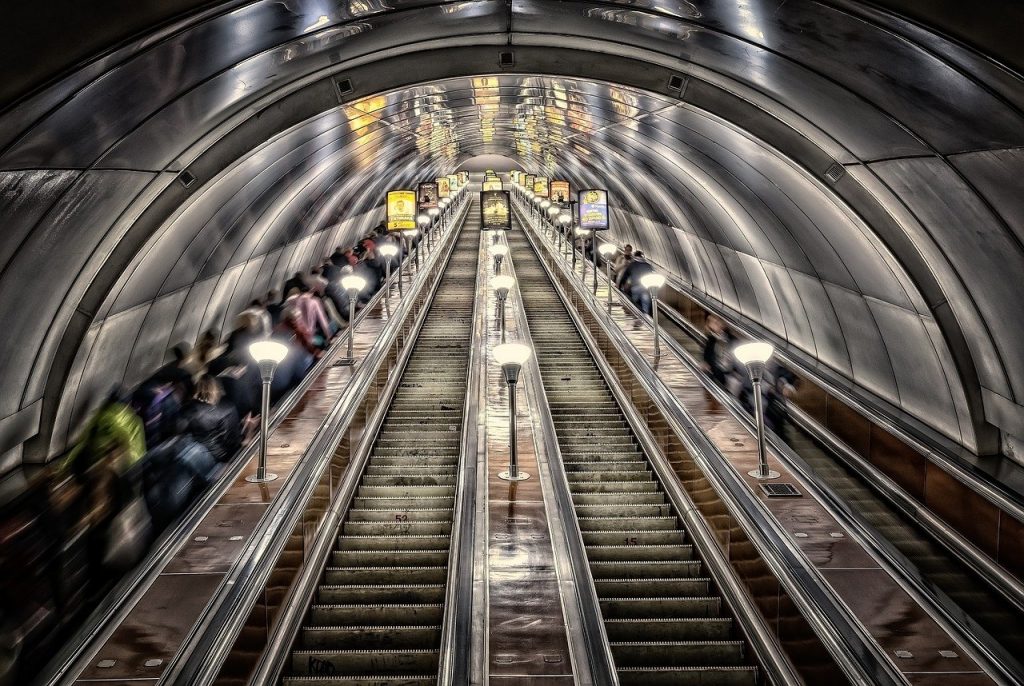When travelling, taking public transport is a good way to blend in with the locals and feel the pulse of the city you are in. The history of public transport bears witness to the progress of our societies and the metro is a unique invention that has changed the face of urban planning worldwide.
Metroguide offers you a walk through the history of the 10 oldest metros in the world and their most incredible legends.
London: the oldest metro in the world (1863)
The underground or the tube, as the English say, can be proud: it is the oldest underground in history. It was inaugurated on 10 January 1863 and was powered by steam locomotives. Today, the London Underground has 408 kilometres of active lines that will take you anywhere in the city. To find out more, don’t miss a visit to the London Transport Museum.
The Istanbul Tünel (1875)
The Tünel was the first underground train in continental Europe. Opened in 1875 (long before the Paris Metro), its short distance of 573 metres carried 12,000 passengers a day! Don’t miss it if you are in Istanbul, the journey takes only 90 seconds! And if you want to cover more miles, you can book our Cappadocia Express Tour. More about Istanbul Tünel …
Chicago ‘L’ (1892)
The Chicago ‘L’ was inaugurated on June 6, 1892, at the end of the 19th century. It is the third busiest underground in the United States, with an average of 600,000 people per week. With the Chicago Explorer Pass, you can use it to get to the city’s main tourist attractions!
It is the third busiest underground in the United States, with an average of over 600,000 people per week.
Glasgow Circular Subway (1896)
Glasgow’s first underground line opened in 1896. Today it is the city’s most important means of transport. Don’t hesitate to take it to see how old it is! And, of course, it’s best combined with a trip to Lake Ness. Ready to see the monster?
The historic Budapest metro line (1896)
The Budapest metro has 52 stations and 4 lines. What is special about it? Line 1, dating from 1896, was declared a World Heritage Site in 2002. Its stations still have an air of yesteryear and are well worth a visit. To learn more about the fascinating history of the city on the Danube, don’t miss a guided tour. Incredible anecdotes await you!
The Paris Metro (1900)
To get around the gigantic City of Light, we all know that the Paris metro (or metropolitain as it is really called) is very practical. Inaugurated on 19 July 1900, it was influenced by art nouveau. To learn more about the influence of this architectural movement in the city, we recommend our free tour. We loved (re)discovering the history of Paris! More about Paris Metro …
The Berlin U-Bahn (1902)
Two years later, the U-Bah (with a speed of 72 kilometres per hour) was built. With 175 stations and 150 kilometres of track, this transport system has witnessed many crucial historical episodes. During the Second World War it was used as a bunker and between 1945 and 1989 citizens of East Berlin were denied access to certain stations. If you are interested in the Cold War, you can book this tour!
New York, a 24-hour underground (1904)
If you’ve ever been to the Big Apple, you’ve probably walked on the floor of the New York City underground, which opened in 1904. 30,000 workers helped build it, and more than 127,381 people visited it on opening day. There’s no better way to get to the Empire Stage or MoMA. Plus, it’s open all hours of the day and night!
Philadelphia’s SEPTA (1907)
The Philadelphia underground has both underground and open-air sections. It began operating in 1907 and now has 208 stations. It is the fastest way to get around this historic US city. And to discover the history of Philadelphia, we also recommend a visit to the Museum of the American Revolution.
Madrid Metro (1919)
Although it was inaugurated long after the London or Paris metros, it is the oldest metro in Spain. It was inaugurated by King Alfonso XIII on the 17th of October 1919, marking a new era in Madrid’s history. If you are visiting Madrid, be sure to visit the abandoned Chamberí station. And if you like ghost stories, you can also take a tour of the city’s legends. Get ready to have goose bumps!
